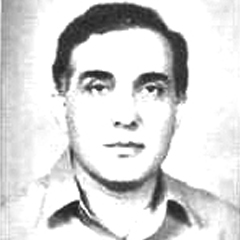Hate is a destructive and consuming emotion that is easy to spark but difficult to extinguish. It is a primal instinct, the opposite of affection, which disrupts fairness, skews balance, and suppresses much of our humanity. Often, it lies deep within the dark recesses of the mind and heart, continually scraping at the foundations of tolerance and forgiveness, disfiguring them with its sharp claws. Hatred is usually triggered by feelings of inadequacy, envy, jealousy, hurt, or even amazement—sometimes a combination of these. But why amazement? When we are in awe of someone else's performance or ability, it can be the first step toward feeling inadequate if not handled by emulation, self-improvement, and appreciation.
Hatred can take many forms: personal, ideological, racial, ethnic, religious, sectarian, geographical, political, class-based, or even allergic. Allergic hatred, although irrational, is triggered by a mental cue. Regardless of the form, hatred works like a glaze over the surface, blocking logic, empathy, and understanding, pushing a person into a harmful state of being. It's a counterproductive emotion, yet one that continues to shape societies, communities, and nations in negative ways.
This toxic emotion has been weaponized by ideologues, politicians, writers, and clergy to manipulate and control their followers, creating divisions, fostering exclusivity, and maintaining power. What began as a local struggle for dominance has evolved into an international art of mass manipulation. The Iranian Revolution, Salafism, Daesh, Hindutva, U.S. interventionism, and South Africa’s apartheid are just a few recent examples. Concepts such as "dark continent," "third world," "Islamic terrorism," "fundamentalism," and "Pakistan's hatred in the Afghan mind" are equally deplorable. When such ideas gain traction, they become divisive forces that breed animosity, conflict, bloodshed, and destruction.
Closer to home, our society is not without its own distractions, which serve as textbook cases of the impact of hatred. For instance, the strained relationship between Bengalis and other Pakistanis contributed to the violent birth of Bangladesh. Today, there are rising tensions between Pashtuns and Punjabis, exacerbated by certain politicians who play on provincial differences to retain power. There are also efforts to stoke divisions between Sindhi and Urdu-speaking Sindhis, further deepening the urban-rural divide. The ongoing class struggle between the armed forces and civil society is also being inflamed for political gain. Similarly, social and family values, along with trust in the judiciary, are being intentionally undermined for personal and political advantages. While there are flaws in these systems, they do not warrant outright condemnation or rejection. What’s needed is a purposeful effort to reform, not dismantle.
Issues such as water distribution, budget allocation, natural resources, and the pace of development in various regions are turned into "us versus them" battles, fueling friction and acrimony between provinces, the center, and ethnic groups. Then, we have the deeply troubling sectarian divisions that have surfaced. While sectarian divisions existed in Muslim Indian society for centuries, they coexisted relatively peacefully. However, after independence, these divisions were aggravated, with various groups seeking political dominance and attempting to mold the country into a theological state. The state has accommodated some of their demands, but both the people and the state have never fully trusted these groups with power. Khyber Pakhtunkhwa (KPK) made the mistake of voting sectarian forces into power more than a decade ago, only to witness the rise of sectarian terrorism. Regrettably, this dangerous trend seems to be repeating itself in recent local elections.
The roots of this sectarianism stretch back to the Soviet invasion of Afghanistan in 1979 and the subsequent U.S.-Saudi push to create a jihadist resistance. This gave sectarian forces space to operate, with the state accepting their agenda. The Deobandi Sunni faction was favored, while Shia factions were excluded, which has had long-term implications for peace in Afghanistan. The ongoing dissonance between Pashtuns and non-Pashtuns in Afghanistan today can be traced back to this selectivity.
In Pakistan, this sectarian menace has proliferated, with groups like the Barelvi TLP emerging as a powerful force. The rise of these groups, characterized by their rigid ideologies and violent rhetoric, injects poison into our society. Tragically, even our educated classes are beginning to buy into their toxic messages.
Moreover, our political landscape is equally corrupt, riddled with dysfunction and exploitation. Our mainstream political parties are not truly national, lacking a visionary agenda and led by subpar leadership. Decades of misuse and disappointment with the electoral system have brought forward a class of corrupt politicians who are repeatedly voted into power by a disenfranchised populace. These politicians, in league with unqualified allies—such as mullahs, feudal lords, ambitious military figures, businessmen in debt, and media moguls—have worked to destroy Pakistan’s struggling middle class, preventing its growth. The middle class is the only force capable of challenging the reckless behavior and corruption of the elite. Unfortunately, the country’s intellectual class has largely remained passive, acquiescing to the status quo. What we see today is a nation in desperate need of visionary leadership—leadership that is trustworthy, wise, and capable of guiding the country away from the toxic forces threatening its future.
